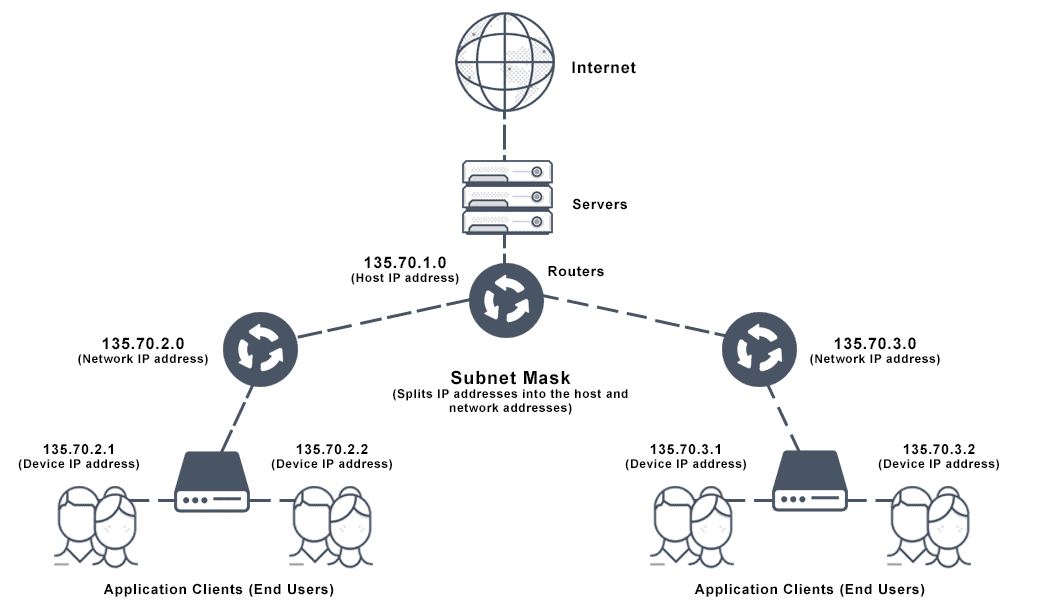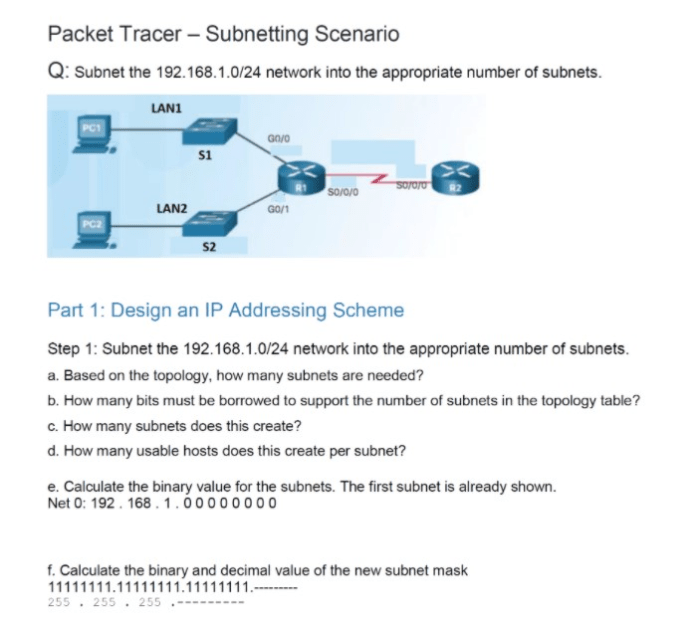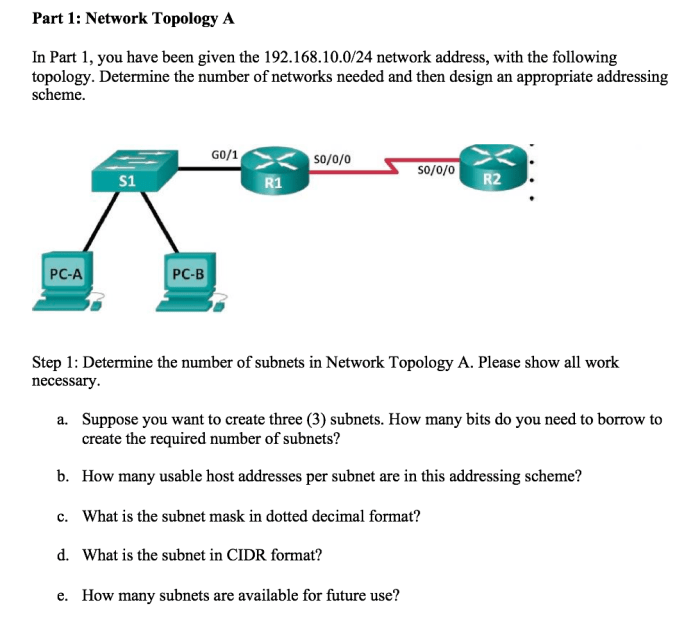Advanced hardware lab 7-1 work with ip addresses and subnets – Embark on an enlightening journey through the realm of advanced hardware lab 7-1, where we delve into the intricacies of IP addresses and subnets. This comprehensive guide unravels the fundamentals of IP addressing, subnetting, and their pivotal role in network communication, empowering you with a profound understanding of these essential networking concepts.
As we navigate this technical landscape, we will explore the diverse types of network topologies, unravel the significance of network protocols, and delve into the crucial aspects of network security. Additionally, we will equip you with practical troubleshooting techniques to resolve common network issues, ensuring your mastery of network management.
IP Addressing: Advanced Hardware Lab 7-1 Work With Ip Addresses And Subnets

IP addressing refers to the unique numerical label assigned to each device connected to a computer network. It allows devices to identify and communicate with each other over the network. IP addresses are organized into two main formats: IPv4 and IPv6.
IPv4 addresses consist of four octets (8-bit numbers) separated by periods, such as 192.168.1. 1. IPv6 addresses, on the other hand, consist of eight groups of four hexadecimal digits separated by colons, such as 2001:0db8:85a3:0000:0000:8a2e:0370:7334.
IP addresses play a crucial role in network communication as they enable devices to locate and send data to each other efficiently.
Subnetting
Subnetting involves dividing an IP address into smaller networks, known as subnets. It allows for more efficient use of IP addresses and provides better network management.
To subnet an IP address, a subnet mask is used. A subnet mask is a 32-bit number (for IPv4) or 128-bit number (for IPv6) that defines the network and subnet portions of an IP address.
Subnetting offers several advantages, including improved network performance, increased security, and easier network management.
Network Topology, Advanced hardware lab 7-1 work with ip addresses and subnets
Network topology refers to the physical or logical layout of a network. It determines how devices are connected to each other and how data flows through the network.
Common network topologies include:
- Bus topology:All devices are connected to a single shared cable.
- Star topology:All devices are connected to a central hub or switch.
- Ring topology:Devices are connected in a closed loop, with each device connected to two other devices.
Each topology has its own advantages and disadvantages, and the choice of topology depends on factors such as network size, performance requirements, and cost.
Network Protocols
Network protocols are sets of rules and procedures that govern how data is transmitted and received over a network.
Common network protocols include:
- TCP (Transmission Control Protocol):Provides reliable, connection-oriented data transmission.
- UDP (User Datagram Protocol):Provides unreliable, connectionless data transmission.
- HTTP (Hypertext Transfer Protocol):Used for transferring web pages and other data over the Internet.
Protocols ensure reliable and efficient data transmission by defining the format of data, the methods for error detection and correction, and the mechanisms for flow control.
Network Security
Network security is essential for protecting networks and data from unauthorized access, use, disclosure, disruption, modification, or destruction.
Common network security threats and vulnerabilities include:
- Malware:Malicious software that can damage or steal data.
- Phishing:Attempts to trick users into revealing sensitive information.
- DDoS attacks:Distributed denial-of-service attacks that overwhelm a network with traffic.
Best practices for implementing network security measures include:
- Using firewalls and intrusion detection systems.
- Encrypting data.
- Educating users about security risks.
Troubleshooting Network Issues
Troubleshooting network issues involves identifying and resolving problems that affect network connectivity and performance.
Common network issues include:
- No internet access:Device cannot connect to the Internet.
- Slow network performance:Data transfer is slow or intermittent.
- DNS errors:Device cannot resolve domain names to IP addresses.
Troubleshooting procedures include:
- Checking cables and connections.
- Restarting network devices.
- Running network diagnostics.
Tools and techniques used for network troubleshooting include:
- Ping
- Traceroute
- Network monitoring tools
Expert Answers
What is the purpose of subnetting?
Subnetting allows for the division of a single IP network into smaller, more manageable subnetworks, enhancing network efficiency and security.
What are the advantages of using a star network topology?
Star topology offers centralized control, scalability, and ease of troubleshooting, making it a popular choice for many network configurations.
How does TCP ensure reliable data transmission?
TCP employs error checking, flow control, and retransmission mechanisms to guarantee the integrity and delivery of data packets.


